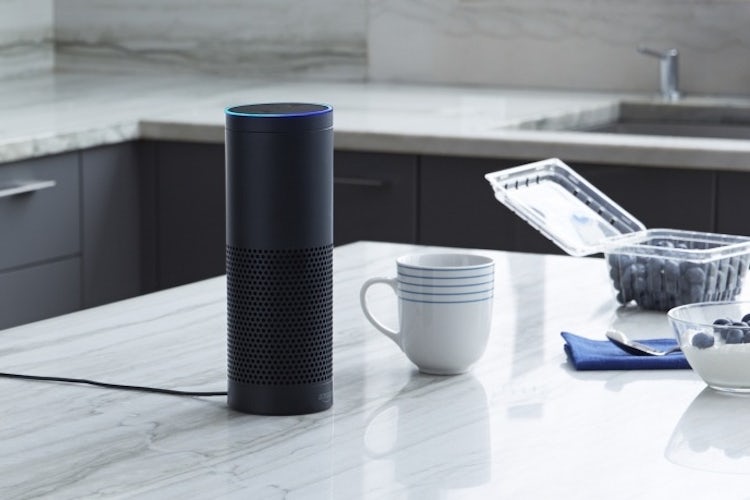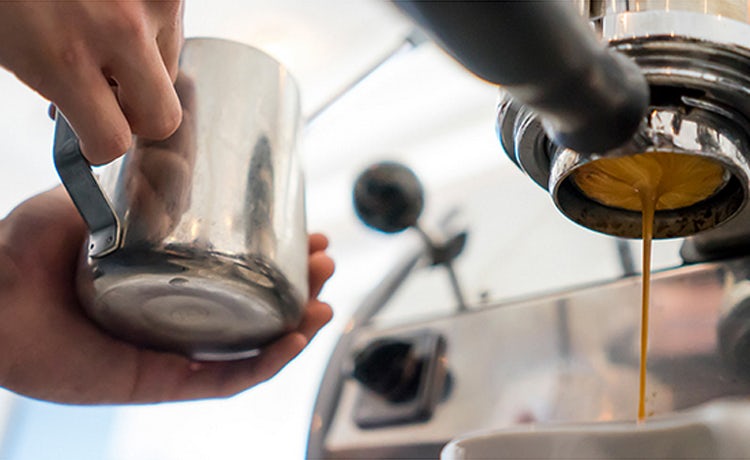
A change is sweeping through retail and it’s not what everyone assumes it is. We may think the internet is changing shopping forever, and it certainly is, but another unspoken dynamic is everywhere – the bifurcation of retail.
Every action has a reaction: a nation high from snacking on six-second videos also needs to binge-watch hours of TV. The consistency of a McDonald’s or Bud Light creates the need that craft beer and pop-up food festivals satiate. Shopping is seeing the same split, moving from shopping as a branded experience and to buying as the ultimate in ease.
Buying is rife
I’m pretty sure no person in modern times has ever been so bored that they went window shopping at Amazon; the spartan CMS, the ugly product shots and the functional taxonomy have all been designed to make buying as easy and seamless as possible. But never fun.
Shopping on Amazon (when it works best) isn’t an experience, it’s a lack of experience. It’s unmemorable. I have bought books twice because I seemingly bought the first one in my sleep. It’s the purest example yet of the act of removing every possible barrier, every piece of friction. The end result of countless A-B tests to optimise for simplicity, speed and efficiency.
This is the world of buying. It’s the surgical operation of a system to reduce cognitive burden, to make decisions fast, facile and frictionless, if not automatic. It started off for people who know what they want and want to get what they need without thinking, yet it’s becoming the default way to acquire goods in the age of too much choice and too little time.
So increasingly the world of retail seems to work this way. We have product reviews spreading across retail with quick-to-glance stars to give us confidence. We have the Wi-Fi connected Amazon Dash Button, which allows us to procure items with a nonchalant poke.
We have limited choice retail, reducing the agony of decisions by offering fewer, easier choices.
We have Hotel Tonight showing us a small range of perfectly decent hotels for that evening that you can book in a swipe. From Casper with its one mattress and eco-friendly baby brand Honest with its simple product offering, to US on-demand streaming service Direct TV Now with its four tiered packages with easy names like ‘gotta have it’ and ‘live a little’. Even Maple, the new food service option in New York offers a handful of curated meals each day giving consumers fewer options to think about.
Either systematically reduce complexity at every turn, or add it in the most delightful way. Don’t get caught in the middle.
What’s easier than buying? Not buying. Things arriving magically each month. If the ultimate in luxury is never having to think, Walmart, Target and Amazon, Dollar Shave Club and more have subscribe and save programmes.
READ MORE: Unilever makes play to become a consumer services brand with Dollar Shave Club deal
The name of the game in buying is making it as easy as possible, and then more. Things like using a PayPal plug-in to save payment details and make checkout easier; using clear, bold interfaces like Polyvore to leverage the instant messaging interface; or getting consumers to swipe with the array of “tinder for shopping apps” or stroke you to purchase via apps like Blynk and Stylet.

New interfaces will continue to advance, buying will soon envelop us, from ordering pizza via voice in the Amazon Echo, to next removing the interface with predictive retail that sends you stuff before you realise you want it.
While it started there, this isn’t just online retail. After years of assumptions that modern retail was about adding screens and complexity, Amazon Go stunned the world with a hyper modern store with technology removed. Gone were iBeacon coupons, or electronic pricing labels, Amazon Go was just a stripped out experience where people did nothing. Or we have concept stores like ‘the store’ in Japan, which just sells the very best one example in the world of about 200 items. The easiest choice architecture being “I just want the best”.
Shopping gets fun
As a reaction to the emptiness of mindless procurement and understanding life is about experiences, not efficiency, we will see the growth of retail as experience.
Even the most ardent M&M’s fan doesn’t believe the 25,000 sq ft of M&M’s World in Times Square, New York is there to satiate the cravings of New Yorkers for chocolate at 11:45pm. Like all flagship stores M&M’s World is there to impart an experience. It’s shopping to be remembered, it’s a journey of discovery, it’s memorable, it’s there to take time and savour. It’s the opposite of buying.
Shopping is most often found in physical retail because it’s the easiest to do with sights and smells. Shopping is the world of adding experiences. It’s the interactive perfume lab in Selfridges, the selfie opportunities in Harvey Nichols, the Hardware Club experiences in Harrods or the extravagant fragrance laboratories of Le Labo. Coffee shops seem to have learned this, it’s the unnecessarily long wait, the drama of the brew, the theatre of the leather-bound menu in Intelligentsia coffee. 
There are different takes, the curated journey and raison d’être of a store like Story in New York, with items placed around a modern tale. It’s the smart mirrors and body shape scanners in department stores. It’s the dramatic design of seemingly endless sewing machines in All Saints, or interesting concepts like Bespoke in Westfield San Fransisco that mixes working startups with places to shop. It’s Nike’s flagship stores with fitness equipment and running club events. It’s the Lululemon pamphlets explaining why they made an item and the local notice board. It’s the Uniqlo stores in Japan where you vote for your favourite new products with white dots.
Buying is what drives farmers’ markets and their stories of provenance, the handmade signs and the seemingly added dirt. It’s the lavender oil factory store in Provence, it’s the oddly expensive wine store at the Vineyard. Buying is the tailored suit made from Suit Supply where the consultation is part of the experience.
But it’s not just offline. Sites such as Net-A-Porter thrive with content as commerce, we have editorialised catalogues taking over the top end of the market, and even companies like Nike making TechBook, a tactile, immersive mobile app where the clothing comes alive. We have shop the look – not only are retailers making magazines, but magazines are becoming retailers.
Move to one extreme to thrive
So while we’re seeing online and offline shopping start to come together, we see retail move to each extreme. The true successes of modern retailers will be those which understand the divergent nature of modern retail and work to optimise for both. It seems unlikely people want a quasi experience. Quite quickly, you are either looking for fun or for necessity.
Retailers need to establish which type they want to be and work hard to maximise that. Either systematically reduce complexity at every turn, or add it in the most delightful way. Don’t get caught in the middle.
Shopping is getting extreme, it’s time to rethink it all to maximise it for the modern consumer.
Work hard to understand consumers’ changing needs and expectations. Ecommerce has changed buying habits forever: we now expect to find things quickly, to never wait in line, we demand that payments are quick, that suggestions for other items surround us. We expect delivery to be fast and free, we don’t mind a relationship as long as it adds value and is two way.
Old world thinking is not tolerated. We won’t understand if stores don’t know what items they have in stock and have to make a phone call. We don’t understand why a retailer cannot predict a delivery date. Vanity sizing is no longer flattering, it’s deeply inefficient, costing consumers time and hitting retailers’ profit margin. We’re not sure why our relationship is still with retailers and not the brands they sell. If my sister has an ecommerce business, why can’t this up-and-coming fashion label?
So let’s think again. Shopping is getting extreme, it’s time to rethink it all to maximise it for the modern consumer. And above all else, in a changing world it’s time to change.




